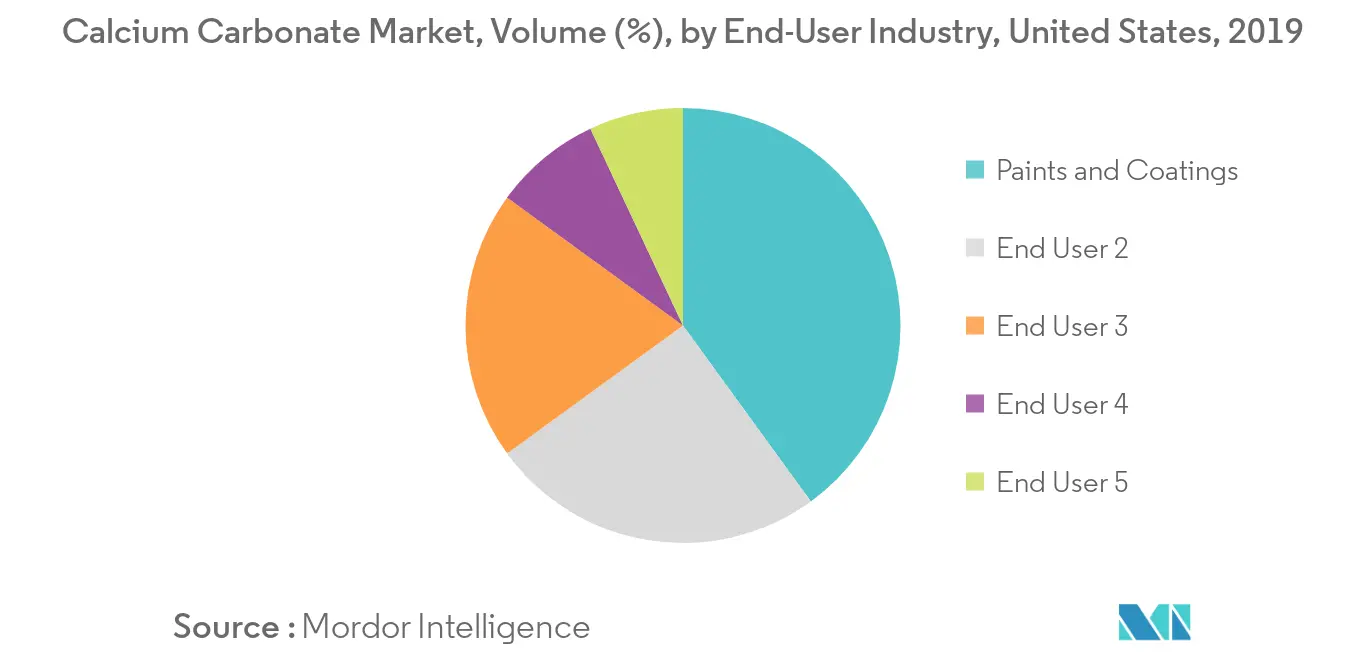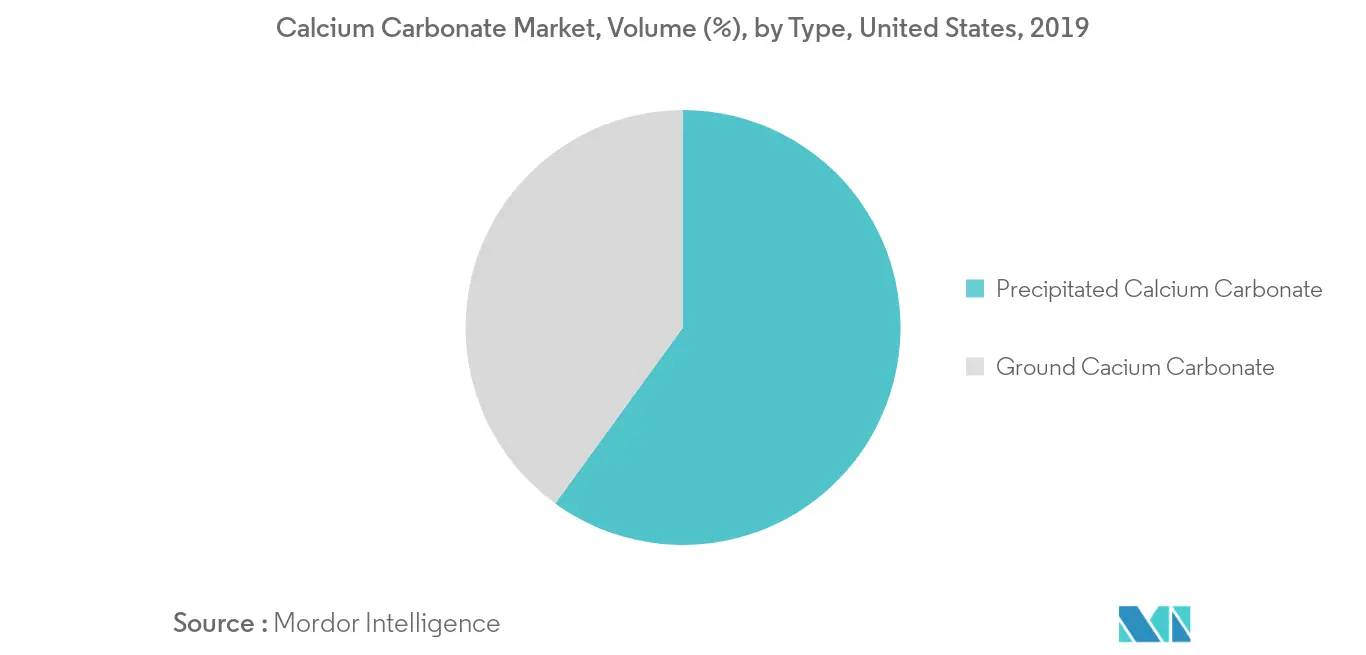Market Trends of United States Calcium Carbonate Industry
Increasing Demand from Paints and Coatings Industry
- In paints and coatings, calcium carbonate (CaCO3) functions as the main extender. The fineness and particle-size distribution impacts the opacity of coatings. Moreover, CaCO3 offers interesting features, like high brightness, low oil absorption, dispersibility, weather resistance, low abrasiveness, low electrolyte content, pH stabilizing effect, and improved anti-corrosion and rheological properties.
- Ultrafine CaCO3 used in paints and coatings has a spatial steric effect. The addition of ultra fine CaCO3 to paint can cause the relatively dense lithopone to stay in suspension and not sink to the bottom. It can increase the whiteness and luster of the paint film without reducing covering ability. These performance-enhancing qualities have ensured the large-scale acceptance of ultrafine calcium carbonate by the paint industry.
- It can prevent settling in latex paints and can reduce the amount of dispersant needed. It is used even more extensively in the aqueous paint industry. Typically, 20%-60% of ultra-fine CaCO3 is used in aqueous paints.
- The construction industry in the United States witnessed a rapid growth in the past few years, as a result of increased private sector expenditure on residential construction. This increasing trend is expected to continue, depending on the funding for larger projects, such as the Hudson Yards in New York City, among various others.
- This growth in the construction industry is expected to contribute to the demand for paints and coatings. This factor, in turn, is expected to boost the demand for calcium carbonate in United States.

Precipitated Calcium Carbonate to dominate the market
- Precipitated calcium carbonate (PCC) is also known as purified, refined, or synthetic calcium carbonate. Almost all the grades of PCC are manufactured through direct carbonation of hydrated lime, known as the milk of lime process.
- The different shapes allow PCC to perform as a functional additive in adhesives and sealants, plastics, rubber, inks, paper, pharmaceuticals, nutritional supplements, and many other demanding applications.
- Besides paper making, PCC finds extensive usage as a functional and commercial filler in industries, like plastics, rubber, paints and inks, adhesives and sealants, food and pharmaceuticals, and cosmetics.
- According to studies conducted by the Centre for Development and Enterprise, the PCC business has an estimated 80% return on investment (ROI).
- PCC is commonly used in paint and inks as extenders to increase opacity and porosity for dry hiding and PCC's unique particle shapes improve hiding and allow reductions in the titanium dioxide levels.
- Decrease in paints and coatings demand due delays in commercial projects and spread of COVID-19 is likely to hamper the calcium carbonate demand from construction industry. However in the long run market is forecasted to recover at a steady state.



